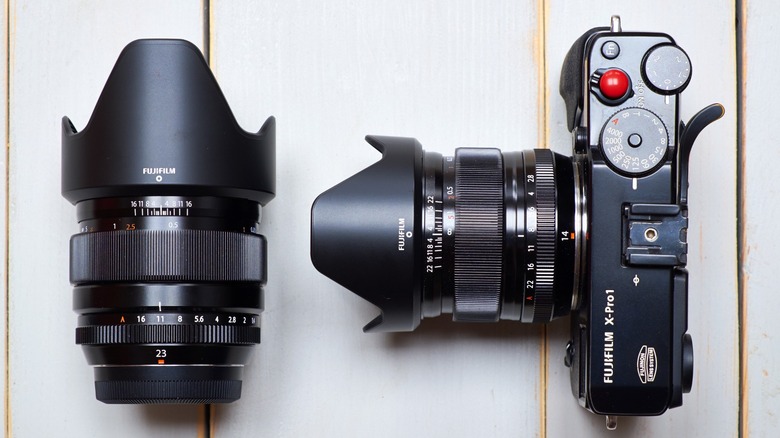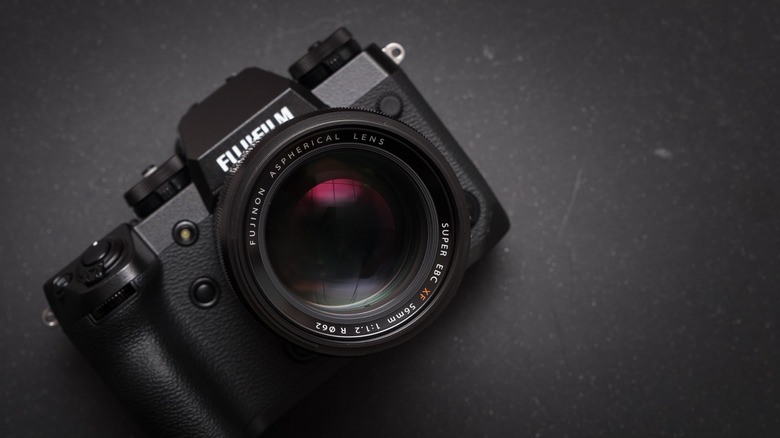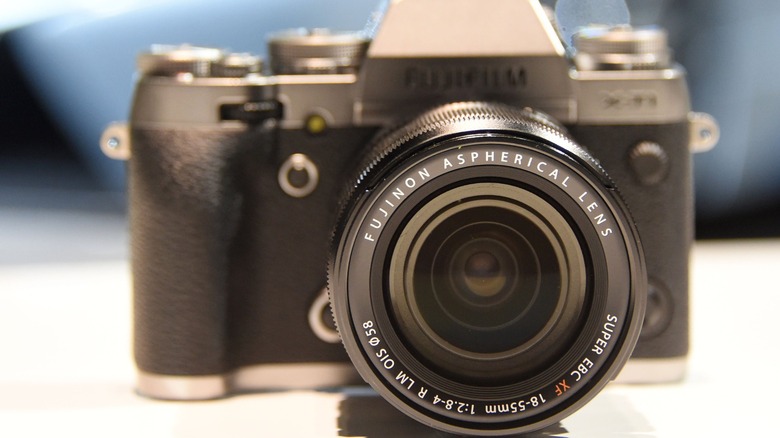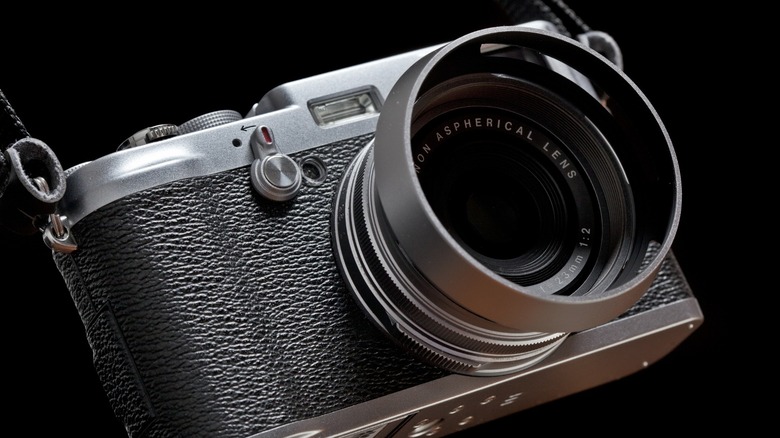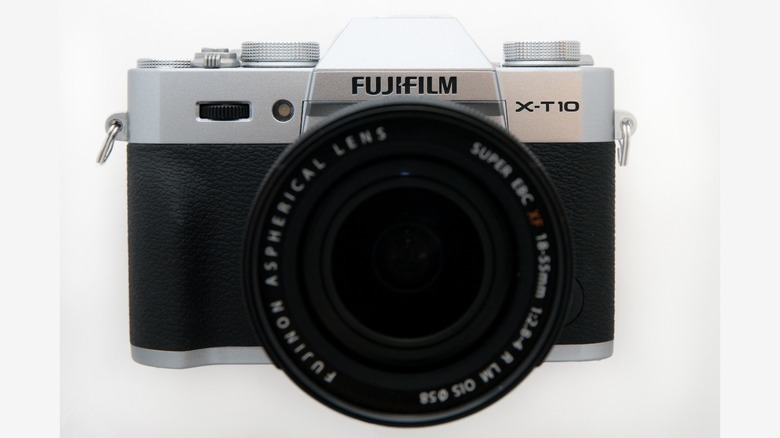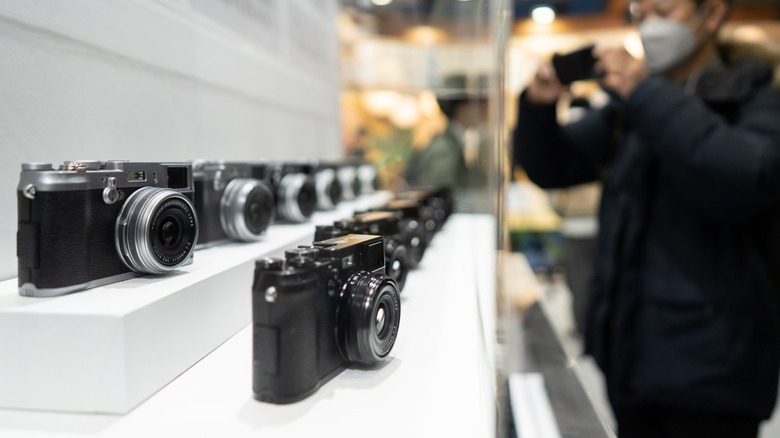Fujifilm X Camera Line-Up Explained: The Biggest Differences (And Which Is Best For You)
We may receive a commission on purchases made from links.
Fujifilm, like Kodak, was once one of the leading photographic film manufacturers. However, once almost everyone had a camera in their pocket via their smartphones, film photography died – taking photography companies like Kodak with it. Thankfully, Fujifilm diversified its photography business into other industries, like pharmaceuticals, healthcare, and cosmetics. This allowed it to survive the rise of digital camera-focused companies like Canon and Nikon. Simultaneously, it continued developing its digital camera line-up, allowing it to grow a niche following for its compact yet excellent X-series of APS-C cameras.
Fujifilm currently offers 12 camera models. However, its naming scheme and options aren't exactly straightforward. If you're currently in the market for a Fujifilm camera, but don't already know a lot about the brand, finding the best option for your budget and needs might be a bit confusing. So, a little primer on each Fujifilm camera available in 2024 can make navigating the market a bit easier.
Top-end cameras
Fujifilm offers two cameras in the $2,000 and up price range: the Fujifilm X-H2S and X-H2. These cameras are designed for professionals, offering the best build quality and features. Both cameras have a magnesium-alloy body and are environmentally sealed to withstand exposure to rain and weather, provided you also use a weather-sealed lens.
Externally, the X-H2S and the X-H2 are the same cameras – it's the sensor that makes them different. The X-H2S sports a stacked CMOS sensor designed for videography. This stacked sensor technology, like the one Sony announced in 2021, allows 4K video at up to 120 fps. It can also shoot photos at 40 fps, ensuring you won't miss a moment. The Fujifilm X-H2S starts at $2,499 on Amazon, making it the company's most expensive model. If you're not into videography but still need high-end features, you can choose the Fujifilm X-H2 instead, which retails for $1,999.95 on Amazon but is sometimes on sale for less than $1,900.
If you're transitioning or trying out the Fujifilm X-line for the first time and don't have lenses for it yet, you can also pick the Fujifilm X-H2 kit that comes with a Fujifilm XF 16-80mm F/4 R OIS WR lens – equivalent to 24-120mm in full-frame cameras – which is priced at $2,499.95 on Amazon but can be sometimes be had for less than $2,300 if you get it on sale.
Mid-range designs
Mid-range cameras are the sweet spot for those who want nice gear but don't want to invest too much money. Fujifilm offers three models at the mid-range $1,000 to $2,000 price point: the rangefinder-style X-Pro3, the analog-SLR-style X-T5, and the modern-looking X-S20. The X-Pro3 is the oldest model in this line, having been launched in 2019, while Fujifilm announced the X-T5 in 2022.
The X-Pro3 and X-T5 focus on delivering the classic analog photography experience, with large dials on their top plate to change the shutter speed and ISO – reminiscent of Canon AE-1 or Olmpus OM10 film cameras. Fujifilm lenses also come with an aperture ring, completing the feel of film cameras, something you do not get with the competing Nikon Zf or Z fc mirrorless cameras. If you like the size and feel of Fujifilm cameras but prefer the ergonomics of modern controls, Fujifilm has the X-S20, which came out in 2023 and is an improvement of the vlogger-friendly X-S10.
The Fujifilm X-Pro3 starts at $1,799 for the body-only option. However, its a high-demand product, and we've only been able to find used models that retail for over $2,000. Alternatively, you can get the X-T5 new starting at $1,699 on Amazon, also available as a kit with either the XF 16-80mm F/4 or XF 18-55mm F/2.8-4 (equivalent to 27-83mm in full-frame) for $2,199 or $2,099. These models are designed for niche users and are a bit more expensive. If you need an affordable mid-range camera, you can get the X-S20 new for $1,349 on Amazon.
Premium compact
The compact camera segment is essentially non-existent, replaced by the excellent cameras on modern smartphones like the iPhone 15 Pro Max, Samsung S24 Ultra, and Google Pixel 8 Pro. However, while Fujifilm's X100 series does not feature a replaceable lens, it has been a sales winner since its launch, with used X100 models demanding insane prices since 2012. The X100VI aims to recreate the X100's success. If you can't find the X100VI in stock, you might have more luck getting the X100V in used markets. However, expect to pay a premium because of its cult following.
The X100 has a fixed 23mm lens (equivalent to 35mm) and manual dials for aperture, shutter speed, and ISO. This premium compact camera gives the basics most photographers need: a medium-wide lens, a compact body, and built-in flash. Furthermore, the fixed lens opens as wide as f/2, giving you beautiful, creamy bokeh and letting you shoot at higher shutter speeds even in low-light situations. However, the biggest turn-off with the X100 series is its price. Though priced at $1,599, you'll often find it around $2,000 because of the hype. If that is the case, you're better off going for the $1,699 X-T5 and a $449 XF 23mm f/2 R WR lens.
Entry-level cameras
If you can't afford to drop over $1,000 on a camera, then Fujifilm's entry-level cameras will satiate your need. Despite being the most affordable Fujifilm models, you can still find camera styles that cater to different niches. The Fujifilm X-E4 has the sleek rangefinder body of the X-Pro3 but came out a couple of years later in 2021. On the other hand, the X-T30 II shares the analog SLR design of the X-T5, although it's based on the older X-T4. Both cameras get the shutter speed and exposure compensation dials on the top plate and the lens aperture ring. However, you'll miss out on the dedicated ISO dial, meaning you must go through the display to change it. The X-E4 starts at $849, while the X-T30 II has an $899 price for the body-only option.
Finally, just like the X-S20 for the mid-range cameras, the X-T200 is Fujifilm's modern camera design in the entry-level budget segment. Although this camera doesn't use Fujifilm's X-Trans sensor, it still delivers excellent images and uses X-mount lenses, allowing you to create sharp photographs. As usual, the modern-style X-T200 is the most affordable option at just $699.
Which camera should you get?
The right camera depends on your budget, use, and preferences. If you're a professional working with video, the X-H2S is the best option. But if you don't shoot many videos, then the X-H2 would do the job just as well at a more affordable price. It also outperforms the former regarding pixels, with a higher count at 40mp (versus 26mp for the X-H2S).
However, the X-H2S and X-H2 are expensive options, starting at almost $2,000. If you want to save money but still want a professional-level experience, mid-range models like the X-Pro3, X-T5, or X-S20 are great picks. If you're new to photography or upgrading from your smartphone and can afford its high price point, the X100VI is also a good option if you can get one for a decent price.
Fujifilm's affordable models are great for beginners who are exploring photography. These camera bodies are inexpensive, and Fujifilm's lenses are less expensive than comparable new lenses from other manufacturers. Aside from budget, Fujifilm also offers three distinct body styles – modern SLR, analog SLR, and rangefinder. These form factors are available on both mid-range and entry-level camera lines, and the best one for you would depend on your taste. If you can't decide, try them out before buying one to avoid buyer's remorse.
